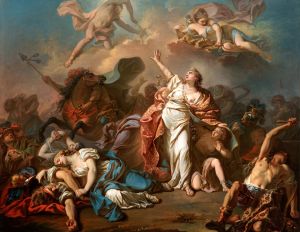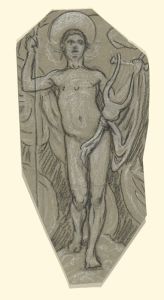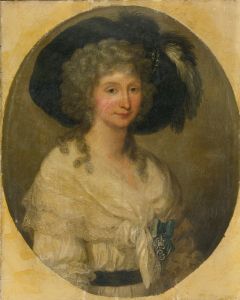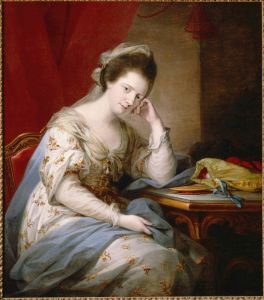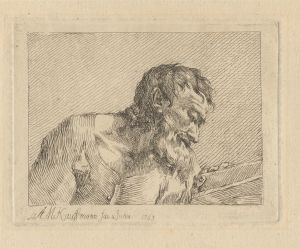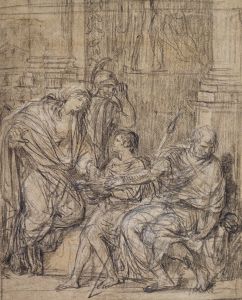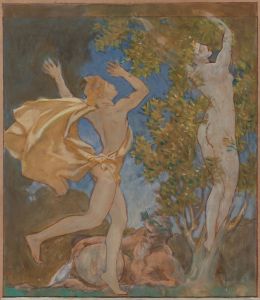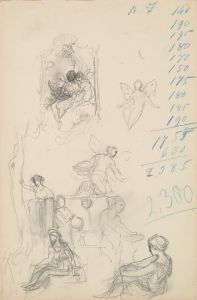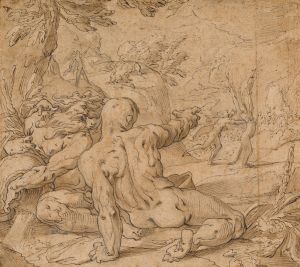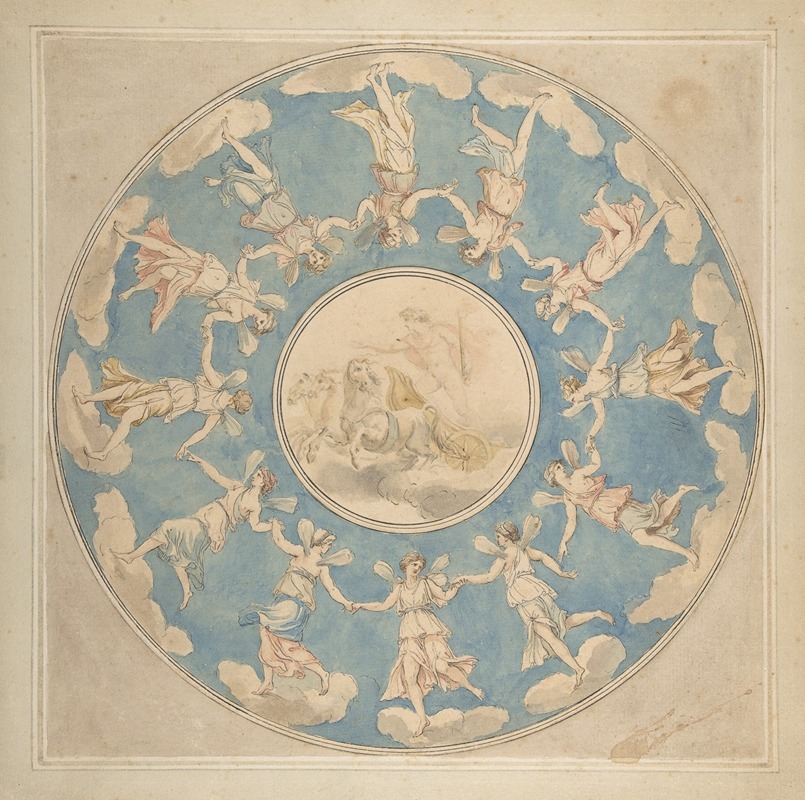
Design for Ceiling; Apollo and the Hours
A hand-painted replica of Angelica Kauffmann’s masterpiece Design for Ceiling; Apollo and the Hours, meticulously crafted by professional artists to capture the true essence of the original. Each piece is created with museum-quality canvas and rare mineral pigments, carefully painted by experienced artists with delicate brushstrokes and rich, layered colors to perfectly recreate the texture of the original artwork. Unlike machine-printed reproductions, this hand-painted version brings the painting to life, infused with the artist’s emotions and skill in every stroke. Whether for personal collection or home decoration, it instantly elevates the artistic atmosphere of any space.
Angelica Kauffmann's "Design for Ceiling; Apollo and the Hours" is a neoclassical artwork created by the Swiss-born artist, who was one of the most prominent female painters of the 18th century. Kauffmann, known for her historical and allegorical compositions, was a founding member of the Royal Academy of Arts in London and gained widespread recognition for her refined style and intellectual approach to art.
This particular work, "Design for Ceiling; Apollo and the Hours," is a preparatory design for a ceiling painting. It depicts the classical mythological figure Apollo, the Greek god of the sun, music, and poetry, surrounded by the Hours, who personify the divisions of time and the natural order. The composition reflects Kauffmann's mastery of neoclassical ideals, emphasizing harmony, balance, and clarity. The figures are elegantly arranged, showcasing her skill in rendering the human form and her deep understanding of classical themes.
The design was likely intended for a decorative ceiling commission, a common practice in the 18th century for grand residences or public buildings. Ceiling paintings often featured mythological or allegorical subjects, aligning with the tastes of the period and the patrons who commissioned such works. Kauffmann's choice of Apollo and the Hours aligns with the neoclassical fascination with antiquity and the Enlightenment's emphasis on order and reason.
As with many of Kauffmann's works, this design demonstrates her ability to blend artistic beauty with intellectual depth. Her training in Italy, where she studied classical art and architecture, heavily influenced her style and thematic choices. The work also highlights her versatility as an artist, capable of executing both large-scale decorative projects and smaller, more intimate compositions.
The exact location or use of the final ceiling painting, if it was ever completed, is not documented. However, the preparatory design remains a testament to Kauffmann's talent and her significant role in the neoclassical movement. Today, the design is valued as an example of her contribution to 18th-century art and her ability to navigate the male-dominated art world of her time.
Angelica Kauffmann's legacy endures through her extensive body of work, which continues to be studied and admired for its artistic and historical significance.





